Inside: Learn what the Gentle Art of Swedish Death Cleaning is and how it can help you to declutter your home.
Swedish death cleaning.
Sounds a little dark – right?
Fortunately, this minimalist approach to cleaning and organizing isn’t as morbid as it sounds.
And it can help you overhaul your home organization habits and clear out clutter in truly meaningful ways.
In this post, we will look at what Swedish death cleaning is, what its benefits are, and how you can practice this decluttering approach in your home.
Let’s get started.
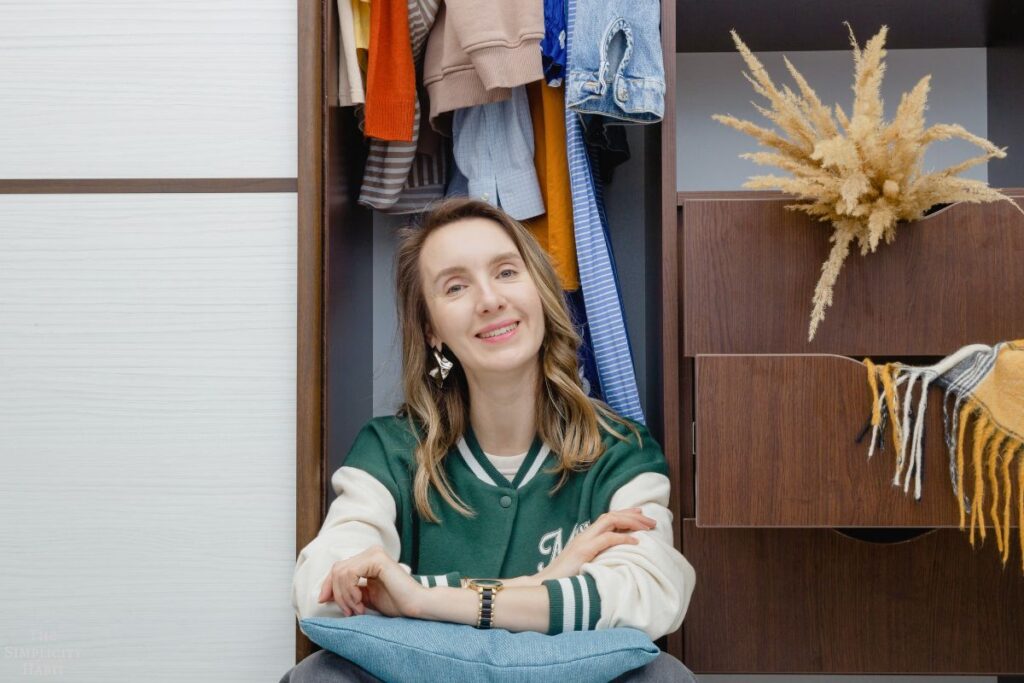
What is the gentle art of Swedish death cleaning?
Disclosure: As an Amazon Associate I earn from qualifying purchases. Please note that I only recommend products I use and love. Click here to read my full disclosure policy.
The concept of Swedish death cleaning stems from the book The Gentle Art of Swedish Death Cleaning: How to Free Yourself and Your Family from a Lifetime of Clutter by Margareta Magnussen.
And as the name implies, it’s rooted in the Swedish tradition of decluttering and getting rid of material possessions prior to death.
The goal? Reducing the burden on your family and preventing them from dealing with the stress of going through your stuff.
There are some misconceptions about Swedish death cleaning. It’s not only to benefit your family members but you as well. And it is something you can do proactively regardless of your life stage.
While the practice sounds like it would be embraced in your final years, there’s no need to wait. People of a variety of ages are using this decluttering approach to enjoy a simpler life now.
An honest approach to life & your stuff
In the U.S. people often are uncomfortable talking about and preparing for death. Although it’s inevitable, it’s often challenging to deal with the emotions and realities that come along with it.
Swedish death cleaning takes away the stigma by taking a very straightforward approach. This no-nonsense tactic with some occasional humor seeks to help people move past their complex emotions to let go of the past and embrace their present.
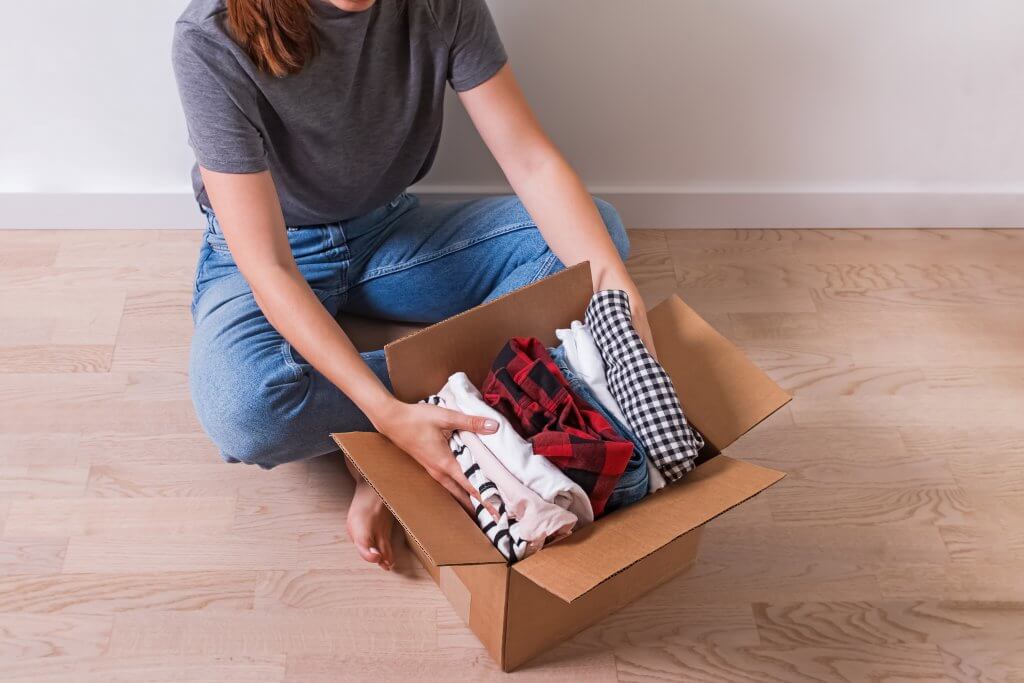
The Gentle Art of Swedish Death Cleaning is really about embracing life while simultaneously preparing for death. The more you can do in advance the less you leave for loved ones to declutter while they’re grieving after you’ve passed.
With Fika (coffee) breaks along the way, Swedish death cleaning takes an intentionally slow approach to minimize stuff.
The idea is that if everything is important then nothing is. Swedish death cleaning seeks to highlight the things that matter most while thoughtfully and responsibly letting go of the rest.
Using this approach you can also take the opportunity to designate who you want to receive particular items. Including a personal note is a meaningful way to gift particular pieces that are important to you.
The Gentle Art of Swedish Death Cleaning Show
The concepts in the book have recently inspired a show (available on Peacock) also named The Gentle Art of Swedish Death Cleaning. Amy Poehler narrates and three experts seek to guide people in various situations to use the Swedish death cleaning approach to let go of clutter and embrace a simpler lifestyle.
If you decide to watch the show, be prepared for some language and quite a variety of personalities. It’s not going to be everyone’s cup of tea, but regardless there are helpful concepts to take from it.
Not interested in watching it? No worries. I’ve got you covered. Keep reading to learn the helpful elements of Swedish death cleaning without having to read the book or watch the show.
So what are the benefits of this approach and how can you use it in your home? I’m glad you asked…
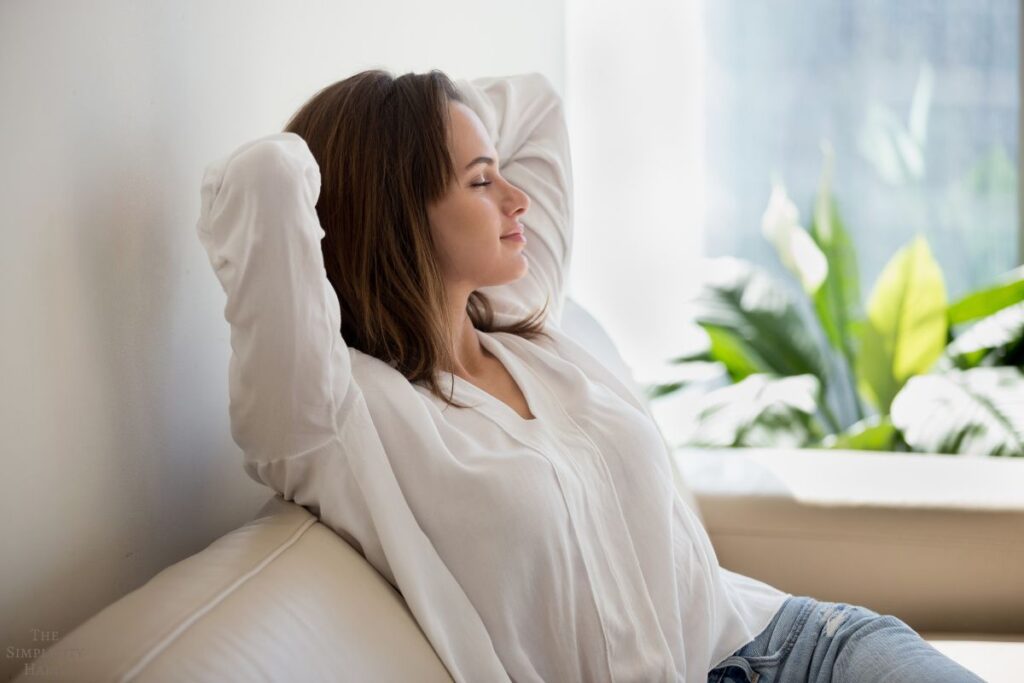
What are the benefits of Swedish death cleaning?
Swedish death cleaning has surged in popularity for a reason: it brings a number of benefits to those who practice it.
Not sure what you could gain from Swedish death cleaning? Here are a few reasons you might want to give it a try sooner rather than later:
1. Reduced stress and anxiety.
Living with a ton of stuff you don’t actually want or need can cause unnecessary stress and anxiety – whether or not you actually feel it as you navigate your day. It can occur at a subconscious level, clouding your thoughts and judgment without you realizing it.
This benefit doesn’t just impact you – it impacts your family, too. Decluttering is an act of love.
The idea behind Swedish death cleaning is that you’re removing the burden of handling this task from your family when you die.
While this is likely not top of mind for your loved ones, should the unthinkable happen, your family will have less to worry about if you don’t have a house overflowing with material possessions.
2. Get ahead of the task.
Over the years, it’s easy to watch our personal possessions pile up – which is why many people end up living in cluttered homes toward the end of their lives.
By tackling the task of Swedish death cleaning now, you prevent yourself from having to deal with it all later on – when you may not be as physically or mentally capable of doing it all.
Not only that, but you get to enjoy all of the benefits of decluttering now instead of waiting.
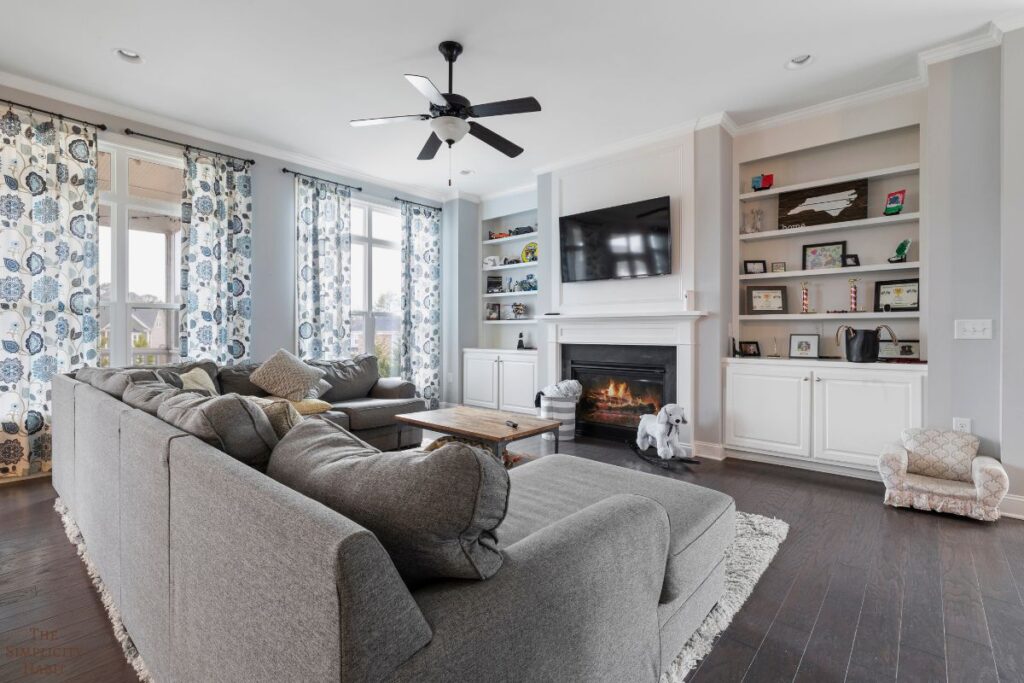
3. A better home aesthetic.
It’s hard to be happy with the way your home looks when you’re constantly surrounded by mess and clutter.
By clearing out the stuff you don’t actually want or need, you eliminate a lot of visual “noise” that otherwise detracts from the look and feel of your space.
By getting rid of clutter, you can also create more space for the things that you love – new plants or artwork, for example.
You get to enjoy the things that bring you the most joy when they aren’t being crowded out by extra stuff.
4. A greater sense of mindfulness.
Going through your possessions and determining what should stay and what should go is a great way to put things into perspective.
Which of your physical possessions hold meaning? What adds value to your life? What do you truly need?
By having those internal conversations with yourself and coming to terms with your priorities and values, you begin to take a more mindful approach to the things that exist within your space now – and the things you bring into it in the future.
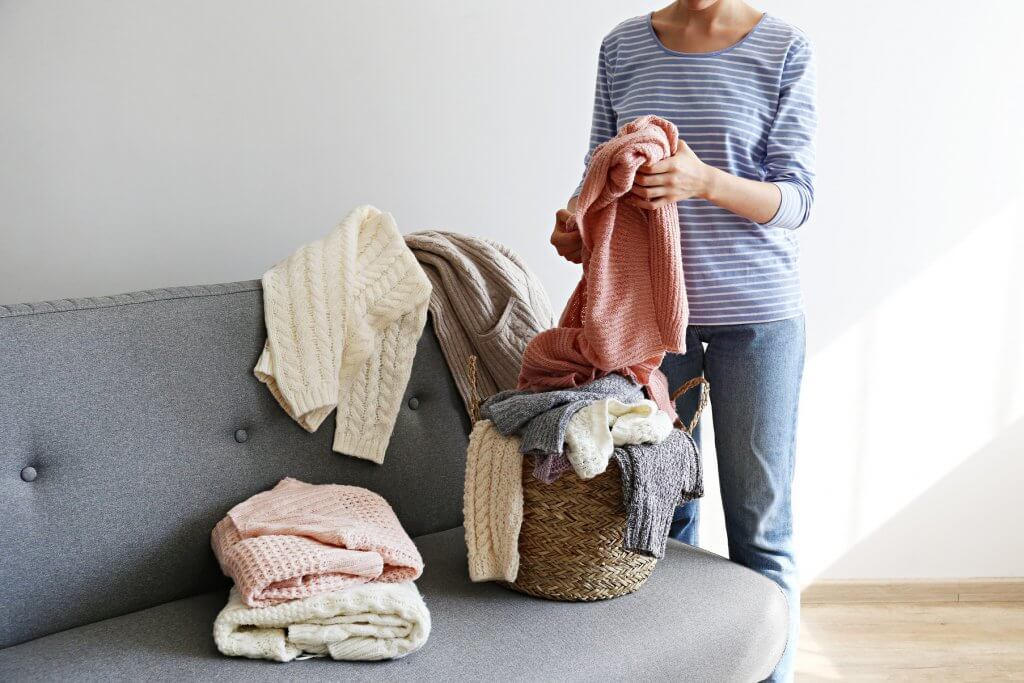
How can I practice the gentle art of Swedish death cleaning?
Want to incorporate some Swedish death cleaning practices as you organize your home? It’s easier than it might seem!
Here are a few simple steps to take to embrace Swedish death cleaning and get rid of clutter for good:
1. Start early – and don’t rush.
Swedish death cleaning is not intended to be a stressful, frantic process. Instead, you should allow yourself time to navigate the process in a thoughtful, intentional way.
Dedicate a little bit of time each day to the task, or carve out some space to sort through your belongings each weekend, and set small but achievable goals to help you make progress.
2. Begin with quick wins.
Like most decluttering processes, it’s a good idea to start with small, meaningful actions to gain a sense of accomplishment and build momentum.
Don’t begin with stuff that holds significant sentimental value – old letters, mementos from your time in school, family heirlooms, etc.
Instead, start with things that will be easy to get rid of, like clothes you never wear and have no emotional attachment to, or large items that are taking up a ton of space in your garage that you’ve been meaning to haul away.
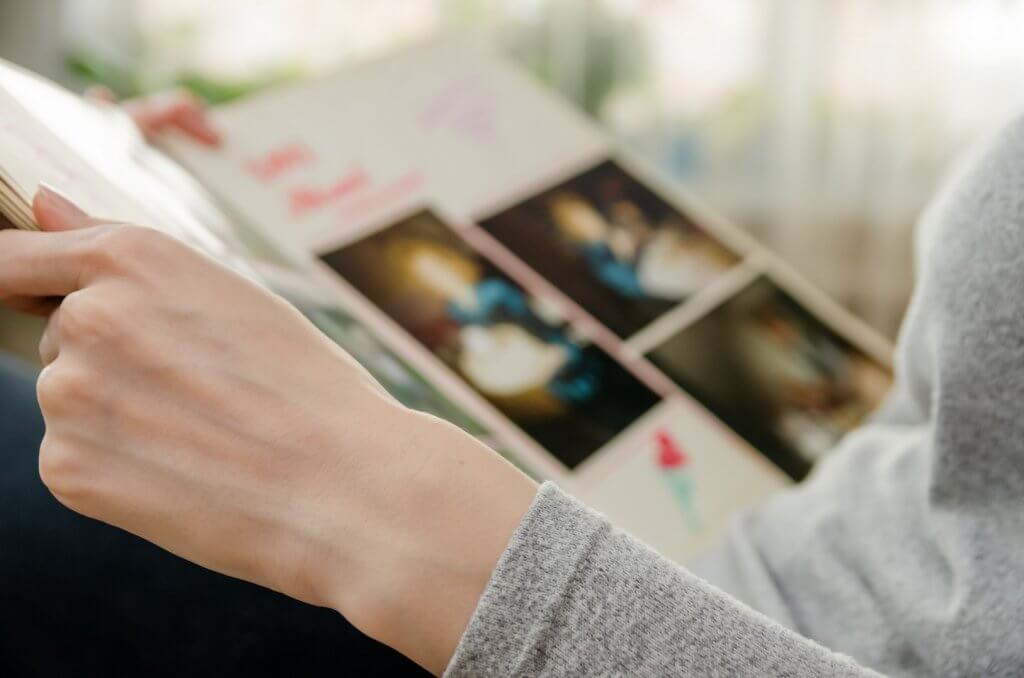
3. Reflect on happy memories.
While many of the items you’ll get rid of hold no value, some may evoke strong memories of times gone by – family vacations, old homes, and past relationships.
As you practice Swedish death cleaning, it’s OK – and encouraged – to pause and savor those moments. Take a trip down memory lane and smile, laugh, or cry.
Reach out and share those memories with a loved one who might appreciate them, too.
4. Don’t forget about digital clutter.
While it’s much easier to focus on the physical clutter that occupies our homes, it’s important to remember the importance of managing digital clutter, too.
Since the idea is to ensure your family can navigate your affairs as stress-free as possible if the worst were to happen, you’ll want to extend that mindset to your electronic records, too.
Do you save photographs to digital albums that your family would appreciate? Or are there any you wouldn’t want someone to see?
If your family would need access to your banking information or social media accounts, is that information clearly accessible in the event it’s needed? What bills do you pay on a monthly basis? What accounts would they need to close?
By thinking ahead and organizing this information – and getting rid of the stuff that doesn’t matter – you can alleviate a ton of stress, both for yourself and your family.
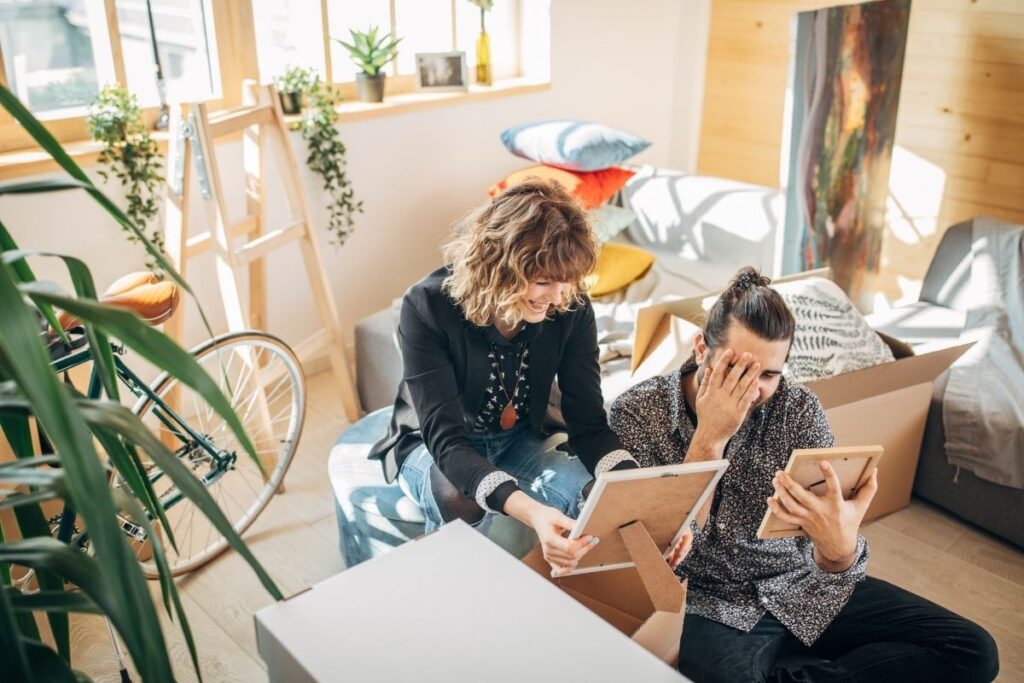
5. Ask for help if you need it.
Some people can easily roll up their sleeves and handle the task of Swedish death cleaning on their own.
Others may want – or need – some support from friends, family, or even a professional organizer.
And if deep-rooted emotions emerge as you navigate the process? Consider seeking out help and connecting with a therapist who can help you navigate those feelings.
How could you benefit from Swedish death cleaning? Leave a comment and let me know!
Sign up on the form below to get weekly decluttering and simplifying inspiration sent straight to your inbox! You’ll also get the free Declutter Plan of Attack Worksheet to help you customize your own decluttering plan for your home.


I have begun to so just that, slowly. it’s amazing how much I’ve already gotten rid of, and still have much more to go. It’s an excellent idea and it came to me as I have been aging. This article confirmed it and gave me more ideas. Thank you!
I’m glad it was helpful for you!
I now have an official name for what I have been doing for several months, thank you!
I have lived in small apartments most of my life, and now live in a large house. I want the space to be filled with “new memories and breathing stretching space” for me, no crowding allowed!
I got this book several years ago. Started reading it, but didn’t finish it. The concept stayed with me. I moved 7 months ago from a huge house and garages to a very small house and garage. My family couldn’t believe what I got rid of and said I didn’t have to get rid of all that I did. I said if I died today, you would have to do it tomorrow. They could have anything they wanted. I thought just this morning that I am so content with my life. It has been so freeing
Thankyou for sharing! I have started too. It is a good feeling to save somebody else from doing my job ☺
But what about paperwork!? I have tons and tons of files, and piles of paper. Every time I try to go thru then I just end up with “different “ piles. And it’s so time-consuming going through them all that it seems to take over my life!!
This post has tips on dealing with paper clutter: https://www.thesimplicityhabit.com/how-to-declutter-papers/
My piles are getting smaller and smaller… what do I really need to keep.. financial files for a period of time, yes; everything else became rather insignificant once I had a new mindset. I had been doing a lot of family research over the years…. seems I am the only one interested. I organized the paperwork into binders with the most significant information, and then put a note on the front of each binder, *If no one is interested in receiving/having this family information, please donate to…* I got addresses, phone numbers, etc of historical societies, university libraries with local interests, and other places who would gratefully receive this information.
Excellent idea! I’ve slowly begun this process being strongly motivated by the experience dealing with my parents home. I think I’m still traumatized and definitely don’t intend on doing that to my family!
I started after Thanksgiving last year. At first, there was tons of items, and it was easy to see results.
Imagine, boxes of items being donated, steady stream! Recycling, and, to a lesser extent, garbage.
It’s a walk through your life!
I found I asked my kids if they wanted items, but I realized they don’t want/need things.
By Christmas I had 14 empty totes, to be repurposed.
About paperwork…
I was regularly shredding a bit at a time. When the shredder broke with one last box, I took it to Staples and shredded it.
In the end, I end up with only things I love. It was a joy to rediscover some favourite items.
After losing a few loved ones and helping the family clear their homes, this has been weighing on my mind. What my spouse, adult children, or friends would think clearing out my things. It’s an emotional burden as well as physical burden to have to go through someone’s personal belongings. By slimming down what I own now is what I would like to do. I also plan on letting some people closer to me know what I no longer want to keep so if those items are something they like, I can give them away vs accidentally donating something someone would have wanted.
Need ongoing motivation and your weekly tips to start my decluttering…
Having taken loving care of people in their dawning days, clearing out is comforting…As I age I too get a big lift out of thinning my stuff.
I began living as a minimalist 20 years ago. I’m happy to say this article didn’t touch any shame or guilt spots hiding. I love that to the Swedes this is everyday stuff. I will use that as I talk to my favorite hoarders. ❤️ Thank YOU
I started decluttering a few years ago using the konmari method but now look at it at getting my house in order before I die. I find it a very positive and loving thing to do for my family and also means I enjoy what I have instead of storing it in the loft.
I realized a few yrs ago that since I have no children and I don’t know how much my niece and her family would want, and as I would hate for some poor soul to have to go through my stuff, I started donating/disposing gradually. My husband is a pack rat and I am a minimalist. If I go first I’m donating and throwing out everything of his and if he goes first it’s all his problem. I honestly don’t know if he would have the presence of mind, but he has to do what’s in my will.
I enjoy being a bit of a minimalist and your article has inspired me to start another round of checking and clearing, especially as we plan to move to a much smaller place within a year. My husband on the other hand, has collected stuff that hasn’t been used, looked at or maintained for decades, and shows no interest in any kind of sorting process. There won’t be room for it all in it’s current state when we move. I’m not sure what to do but something will have to happen soon!
Thank you for raising the topic again – I’ll talk about it from the point of view of kindness to his kids!
I’ve thought this way for several years. I can’t say how successful I’ve been, but we’re trying! My mom started thinking this way after an extended business trip (9 mos.) and came back with the mindset of “If I can live out of two suitcases for almost a year, why am I hanging on to x, y, z?” I have to admit that it bothers me a little when she starts gifting some things to me that she’s had since before I was born, things so deeply rooted in my psyche as hers, but it will make things sooo much easier for me to handle when that time comes (I’m an only child). I won’t have to worry about wondering what she would have wanted me to do with x, y, or z.
Once I retired, I began the arduous task of purging, not wanting to burden anyone with things I can take care of while the sun shines so to speak. Approaching 77 soon, I started one room at a time, and in several months the daunting task of removing the mountain of stuff, I am happy to say it is now a molehill in comparison. Now is always the best time rather than later. As we know later is a way of procrastinating. And tomorrow may never come.
I started decluttering when my husband was diagnosed with cancer a few years ago. He is a hoarder and won’t let anything go. He buys things and then never looks at, or maintains them. He has broken stuff that he won’t throw away because he’s going to fix it someday. We still have boxes of junk that he packed up and brought to our new house 20 years ago, which have never been opened. He has stuff from his mother, grandmother, aunts…things no one else will want when we’re gone. I look around and just want to cry. I have nice things that I can’t put out because there’s so much, and no room. When he was still able to go to work, I would go through things and either put them out in the garbage (in black garbage bags so he couldn’t see what was in them), or box them, tape them up and donate them to people who could use them, instead of them being in the attic, basement or closets where they just collect dust.
Now I do it while he’s sleeping, or at doctor visits. There is so much stuff still! But I am getting it done, little by little, and I get such a feeling of satisfaction when I can see the results, even if it’s just a few boxes, or bags that leave an empty spot!
I started doing this seven years ago, working through one room at a time. Every drawer, every closet, every shelf. While I was part way through the second story, my husband got deathly ill and, upon his recovery, decided we needed to move to senior living ASAP. Forty-five days later, we moved from a two story (with full basement) four-bedroom house to a two-bedroom condo. Our new ‘basement’ was a storage locker the size of a telephone booth. My goal was to fit everything we needed into that space, no outside storage rentals.
We made it, thanks in a very large part to my ongoing decluttering. You never know what your future holds, start now.
I started this years ago when I kept moving and had boxes I never opened over the course of 3 moves! yikes! Then after my parents passed away, we had their house to sort through which was full of good stuff and junk. yuck! I now have my house just about how I want it with most of the excess stuff gone. It is so freeing! Each month I seem to recheck another area and can find a couple things I don’t need or want anymore.
One gentle method I’ve been using is this:
The only item allowed on the floor of my clothes closet is a box maked DONATE. When it’s full, it goes to Goodwill. If another charity has a fundraiser before the box is full, I let go of what’s in there.
This is not a rapid solution but it helps.–Anne
I didn’t know this was a thing until I came across this article. But I have been the beneficiary of “Death Cleaning.” My grandmother was a full-blood Finn. For many years before she passed, she would randomly send me and my family gifts. She would always include a sweet note with a short story about the item. The note was nice, not only to see her handwriting, but also because she documented where the item came from and why it was special to her. That prevented my family from having to figure out if the item should be kept or not because she already did that work. The gift was made even more precious because it let me know she wanted me to have the it.
I have read the book, and it makes such wonderful sense, especially for those in their twilight years. I began my decluttering journey about 5 years ago, and in that time over 7,000 things, both large and small, have left my home e.g. furniture, masses of photos etc. I have lots of “white space” now, but my journey is far from complete. I now have another motivator – my partner has terminal cancer, and after he passes, I will be selling up and downsizing. My hardest work still lies ahead, and I am very thankful for the inroads I have made so far.
Ive been a minimalist for a few years. But when my mother died in July I realised just how awful it is to have to get rid of other people’s stuff. My father died 22 years before my mom, but she didnt get rid of much of his stuff. So when she died I was left with a huge job of sorting through what they had accumulated during their lifetime together. The first week was fine because there were a few nice items that evoked memories, but after 6 months I can’t say Ive found this enjoyable at all. Amongst their stuff I found all their old reading glasses, old pens, calculators, little clocks, telephones, and hordes and hordes of magazines etc. My fathers clothes were still in his cupboard, unworn for 22 years. My favourite moment was when I found someone who could finally enjoy and benefit from some encyclopedia’s that had been sitting on their shelves unread for 35 years. What is so sad for me is that my mother thought her stuff had value, that it was worth stealing. We live in South Africa and she had a lady come and clean her home once a week. My mom refused to go out on that day incase the woman would steal her stuff. But after mom died I saw mostly she had old rubbish that no one would want. Why live your life hoarding rubbish? It’s sad, and wasteful. Get rid of stuff that you dont use so someone else can. Dont save it in a cupboard or box, it will become unusable, worthless rubbish.
I have two area of stress when decluttering. 1. When I come across something a deceased family member owned, if if it was in the basement and forgotten about, when I touch it again, I feel them. If I get rid of it, I will lose that memory. I will forget until I see it again. 2. I have spent a lot of money on some of the items such as mutiple sets of vintage dishes. I have no emotional attachment, just guilt over wasted money if I were to take it to a thrift store and I don’t have the energy or time to resell on my own.
True – I get it. May I offer..
1. It is truly lovely to hold something that reminds us of a loved one who is passed. Maybe you could reduce the number of items. So, instead of keeping 10 different items select the most meaningful. That might help reduce the amount of items you keep. You can also take pictures of the item and revisit it more frequently that way.
2. I think of it this way – the money I spent on the item(s) is already spent. I have enjoyed the item in past and that is why I spent the money. If I no longer think the item is part of my future it is okay to let go. It doesn’t matter how much I spent on it. I got my money’s worth already – AND – keeping it in storage will not make me feel less guilty. As for selling items – that is a good thing to do but if, like me, you don’t want the hassle then remember that most things are not worth what we think they should be worth and it isn’t a life changing amount of money usually. Would and extra $100 change your life? Hang on the money you have now and don’t worry about money you already spent several years ago.
Being able to take the time to reflect on happy memories is what I missed out on the most. My mother had a rather rapid decline last year which required me to move her into memory care. Due to time and money constraints, her home needed to be sold in order to pay for the facility she required. My mother had been in that house for 35 years, and my grandmother had been in it the 30 years prior to that. I was lucky enough to have 2 months worth of vacation saved, which seems like a lot, but is just a blink of an eye when you have to get a house on the market, research and interview multiple memory care facilities, be the caregiver for someone who needs 24/7 care, and then add in nearly 70 years worth of possessions to go through, donate, trash or find a place to store. With constant deadlines on more than 2 dozen “have to do” items, I just could not take the time to sit down and go through the photographs and personal papers/letters etc, that we unearthed from emptying out the attic. We lost out on the time when she was still cognizant enough to tell me who everyone was in the photographs because I had to deal with the accumulation of junk that didn’t mean a thing to anyone, including her. In another post this past week, a woman got her knickers in a twist because she thought the younger generation didn’t have enough respect for the older generation’s items. I would counter that with the amount of unused, broken, and useless items that my mother kept stuffing into closets, the attic, the basement, and the garage, it was she who did not respect the items that were, in the end, the most meaningful. My mother is now safe, and seemingly happy living in her own little world that has no basis in the real one, and I’m left with pictures of people I assume are family but who I don’t know or recognize, and the inability to hear the stories that my mother could have told me about them.
That’s so hard, Jennifer. Thanks for sharing your experience.